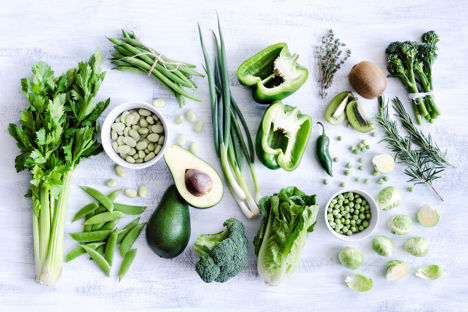
Top food trends for 2017
While fads come and go, every year certain trends appear that help shape the culinary landscape of the UK. Here’s what we think 2017 has in store.
Top food trends for 2017
While fads come and go, every year certain trends appear that help shape the culinary landscape of the UK. Here’s what we think 2017 has in store.
Our set of predictions for 2016 managed to forecast some of the past twelve months’ most exciting trends: Japanese food became more and more popular, the rise of restaurant delivery services showed no sign of stopping and goat was the hot new ingredient for many of our chefs. While it’s easy to dismiss trends as fads or gimmicks, there are always some that stick around and change the way we eat – before gourmet burgers were a ‘thing’ no one could have predicted how popular they’d become. Here’s what we think is going to be big news in 2017.
To market
Street food markets are nothing new, with the likes of Dinerama, Street Feast and Trinity Kitchen serving up delicious handheld morsels from all over the world, but the idea behind them is beginning to evolve into something so much more. We covered the opening of Mercato Metropolitano in Borough earlier this year – a one-stop shop for everything artisan with street food stalls sitting alongside shops selling the very best of Italian produce, a cookery school, wine and craft beer bars and an urban allotment. There’s even a boxing gym and on-site cinema. More of these mega-markets are set to open in the next year, including one from Time Out (a company that’s had huge success in Lisbon with a similar venture already) and new sites from the celebrated London Union, which has the backing of people like Jamie Oliver, Nigella Lawson and Giles Coren.
Mexican waves
Peruvian has had its turn, now we think it’s time proper, authentic Mexican food gets the attention it deserves. As delicious as tacos, burritos and guacamole are, there’s a wealth of exotic ingredients, regional recipes and complex, intricate dishes barely seen outside of the country. The cuisine is set to hit the fine dining scene in 2017, with René Redzepi’s iconic Noma moving to Mexico for seven weeks in April, while acclaimed chef Matha Ortiz will be opening a new restaurant at the InterContinental Park Lane Hotel, serving her inimitable take on Mexican classics like mole. Throw the fact that chef Enrique Olvera appeared on the second season of Netflix’s Chef’s Table, and it’s all but guaranteed that we’ll all be gaining a newfound respect for Mexican food.
Southern charms
Moving from Central to South America, we believe there’s still plenty more to discover about the incredible ingredients of Peru, Brazil and elsewhere. Quinoa seems to have firmly planted its roots in the British diet (it’s even grown in the UK these days), but there are many more grains yet to make their way over – keep an eye out for more amaranth cropping up. There are over 4,000 varieties of potatoes in Peru alone, and while some can be eaten at restaurants like Lima we can expect them to start appearing on market stalls and in specialists shops (particularly oca, a red tuber that’s now grown in Wiltshire).
Plant power
Meat no longer has the monopoly on the plate that it once did, with vegetables a bored afterthought playing second fiddle to the main event. Ever since we discovered cauliflowers taste amazing when roasted instead of boiled we’ve been much more appreciative of just how versatile, complex and downright tasty veggies can be. There are already plenty of Michelin-starred chefs putting plants and greens first then using meat or fish as a side, and we’re looking forward to seeing how this continues to evolve in 2017. With the rise of veganism, it also heralds a new age for eating out; rather than being confined to the healthy, new-age type of food that tends to dominate meat and dairy-free restaurants, we reckon vegans will be getting more and more changes to pig out on indulgent dishes at their favourite spots.
Seasonal seasonings
Salt and pepper are sooo 2016 – perhaps not, but the way top chefs are seasoning their dishes is beginning to change. Instead of sprinkling salt over a plate before serving, they might grate over a little cured ox heart. Rather than using the juice of a lemon to add acidity, they might sprinkle some vinegar they’ve infused with tarragon and blackberries in-house or add some home-preserved pickles. Salt is still the most important ingredient in cooking, but by combining it with other ingredients before adding it to a dish, you can come up with some really interesting results. And with our increasing appetite for fermented, Nordic-inspired flavours, we think vinegars and preserves can only get better.
Rediscovering the past
It seems every national cuisine has gone or is going through a period of gastronomic introspection these days. New Nordic put Scandinavia on the culinary map; Spain was given the ElBulli treatment and even the hard-to-define ‘Modern British’ helped reinvigorate the UK’s food scene. It’s currently the turn of countries like Turkey, where New Anatolian is taking ancient ingredients, techniques and dishes and reinterpreting them for a contemporary audience. Elsewhere, chefs like Virgilio Martinez in Peru are setting up research institutes to help document the incredible wealth of produce in their home countries, before taking the best of the lot and turning it into haute cuisine. The hard work almost always pays off, resulting in delicious new flavours and worldwide recognition for traditional, authentic food.
Get in touch
Please sign in or register to send a comment to Great British Chefs.

